Granular Matter
ARCHITECTURE AT THE EDGE OF CHAOS
Calvin Fung
Master of Architecture, 2017
Architecture, Ryerson University
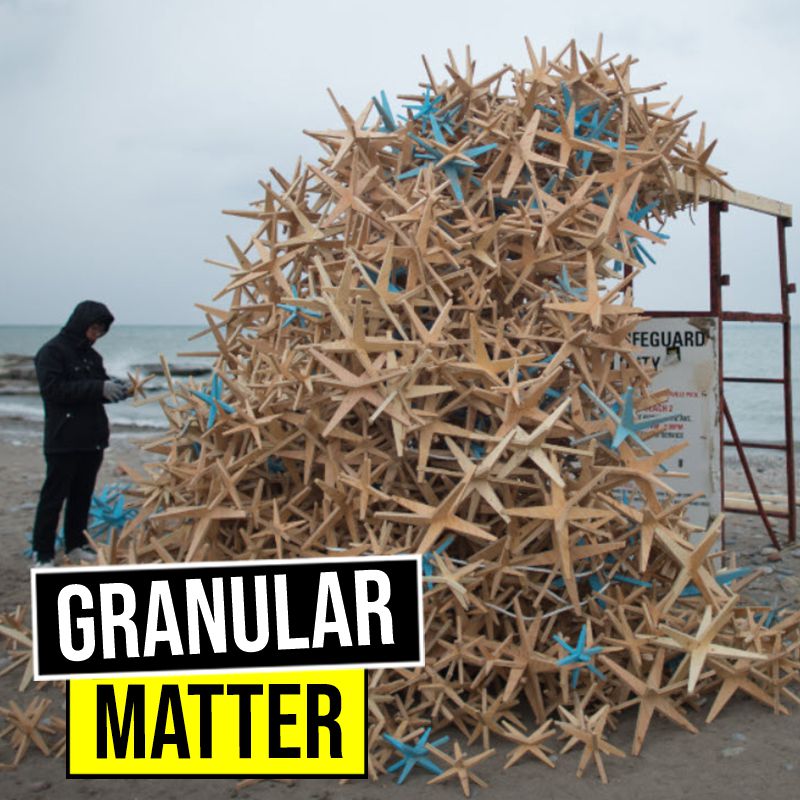 The changing needs of society informed by rapid technological, social and ecological changes have disturbed the foundation of permanence on which much of architecture was built. Traditional Western architecture is too solid, hard, and slow—presenting difficulties for it to adequately adapt to change and uncertainty. A reconceptualization of architecture is necessary, one not focused on the certainty of solutions or forms, but one patterned by the dynamic feedback of human agency and environmental forces. For architecture to adapt, and to adapt to unpredictable circumstances, requires that architecture accept uncertainty in its formulation and materialization. Embracing systems-based thinking, a conceptual model based on the complex systems of granular matter provides a unique approach to architecture’s material and immaterial structures. Architecture will then be critically poised at the edge of chaos, ready to reorganize and evolve towards a new fluid paradigm.
The changing needs of society informed by rapid technological, social and ecological changes have disturbed the foundation of permanence on which much of architecture was built. Traditional Western architecture is too solid, hard, and slow—presenting difficulties for it to adequately adapt to change and uncertainty. A reconceptualization of architecture is necessary, one not focused on the certainty of solutions or forms, but one patterned by the dynamic feedback of human agency and environmental forces. For architecture to adapt, and to adapt to unpredictable circumstances, requires that architecture accept uncertainty in its formulation and materialization. Embracing systems-based thinking, a conceptual model based on the complex systems of granular matter provides a unique approach to architecture’s material and immaterial structures. Architecture will then be critically poised at the edge of chaos, ready to reorganize and evolve towards a new fluid paradigm.
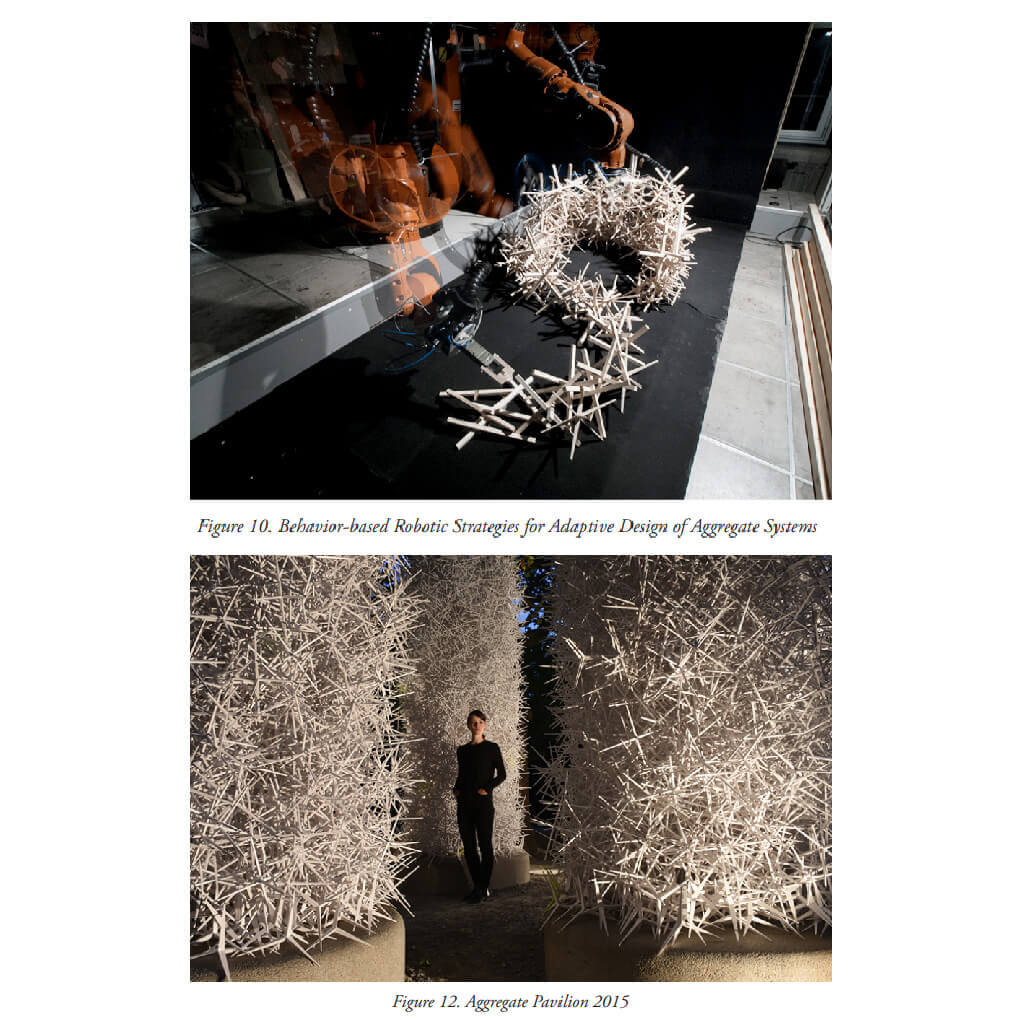 The success of human civilization relies on the capacity for adaptability in the face of change. As nomadic creatures our movements were once intimately connected to the seasons and bound to the patterns of animal and land systems. With time, in response to changes in climate, the surface of the earth, and other living forms, we experienced a shift from hunter-gathering to sedentary societies. Additionally, with the development of these societies, Manuel DeLanda, summarizing physicist Arthur Iberall’s account in terms of flows and phase transitions, describes it as “’fluidlike’ social formations ‘crystalized’ into stratified civilizations”. DeLanda contends that early societies may have achieved a “better consistency among their flows, a viscosity more in tune with their ecosystem than our own”.
The success of human civilization relies on the capacity for adaptability in the face of change. As nomadic creatures our movements were once intimately connected to the seasons and bound to the patterns of animal and land systems. With time, in response to changes in climate, the surface of the earth, and other living forms, we experienced a shift from hunter-gathering to sedentary societies. Additionally, with the development of these societies, Manuel DeLanda, summarizing physicist Arthur Iberall’s account in terms of flows and phase transitions, describes it as “’fluidlike’ social formations ‘crystalized’ into stratified civilizations”. DeLanda contends that early societies may have achieved a “better consistency among their flows, a viscosity more in tune with their ecosystem than our own”.
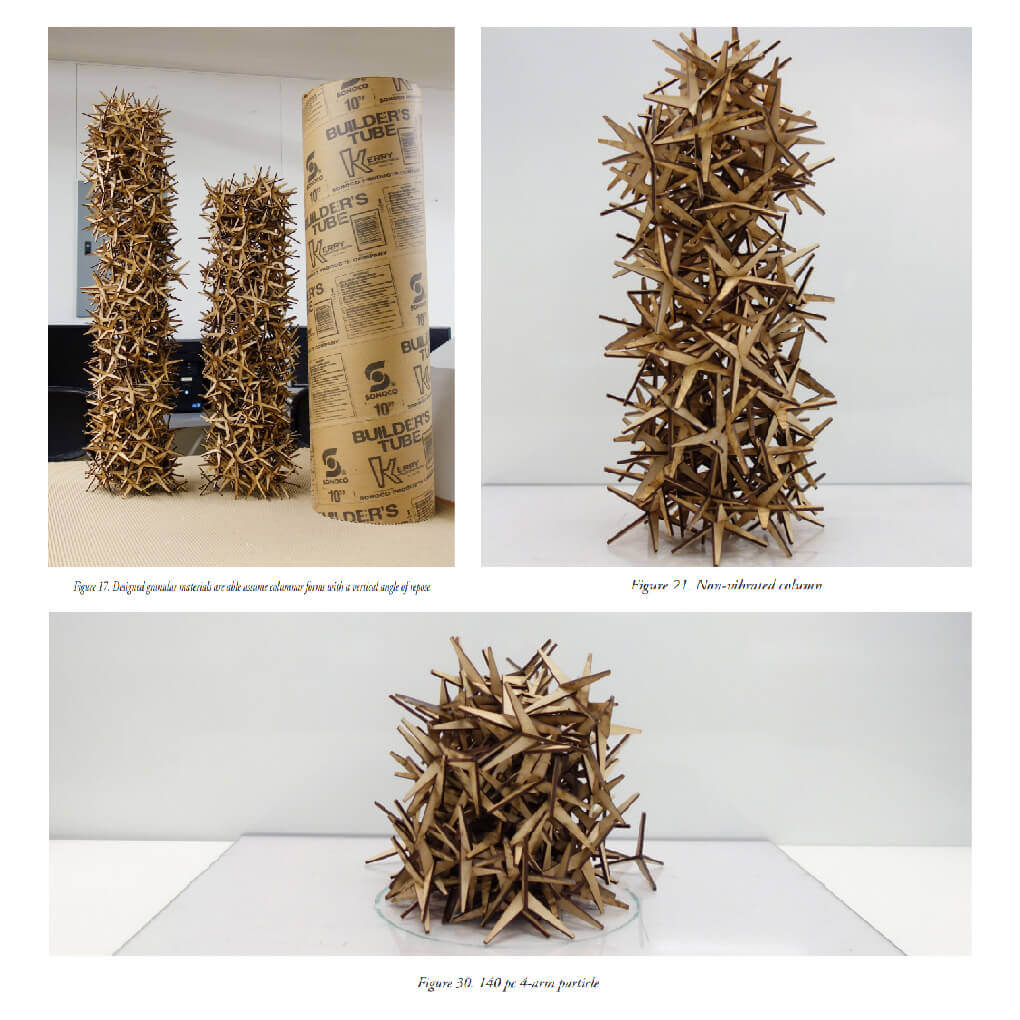 Today, technological, social, and ecological shifts across the world are dramatically affecting our lives. Customization and greater access to information has brought upon us great variety and choice. Our current contemporary condition is characterized by constant and rapid change. It is what sociologist Zygmunt Bauman defines as a “liquid” modernity. Consequently, within this free flowing state, a cause for concern for Bauman is the societal shift emphasizing the individual. As social structures struggle to keep pace with relentless change, the individual is left responsible for managing their own life leading to uncertainty and anxiety. I argue, for the contrary, for the individual, but empowered and an embrace for the productive potential of uncertainty through the very concept of ‘fluidity’. Fluid times calls not for fixed solutions, but flexible responses. Like DeLanda states, we should be focusing on “destratifying hardened institutions, setting into flux human practices that have sedimented”. This could be extended to the practices of architecture and the forms of our shelters that sustain us.
Today, technological, social, and ecological shifts across the world are dramatically affecting our lives. Customization and greater access to information has brought upon us great variety and choice. Our current contemporary condition is characterized by constant and rapid change. It is what sociologist Zygmunt Bauman defines as a “liquid” modernity. Consequently, within this free flowing state, a cause for concern for Bauman is the societal shift emphasizing the individual. As social structures struggle to keep pace with relentless change, the individual is left responsible for managing their own life leading to uncertainty and anxiety. I argue, for the contrary, for the individual, but empowered and an embrace for the productive potential of uncertainty through the very concept of ‘fluidity’. Fluid times calls not for fixed solutions, but flexible responses. Like DeLanda states, we should be focusing on “destratifying hardened institutions, setting into flux human practices that have sedimented”. This could be extended to the practices of architecture and the forms of our shelters that sustain us.
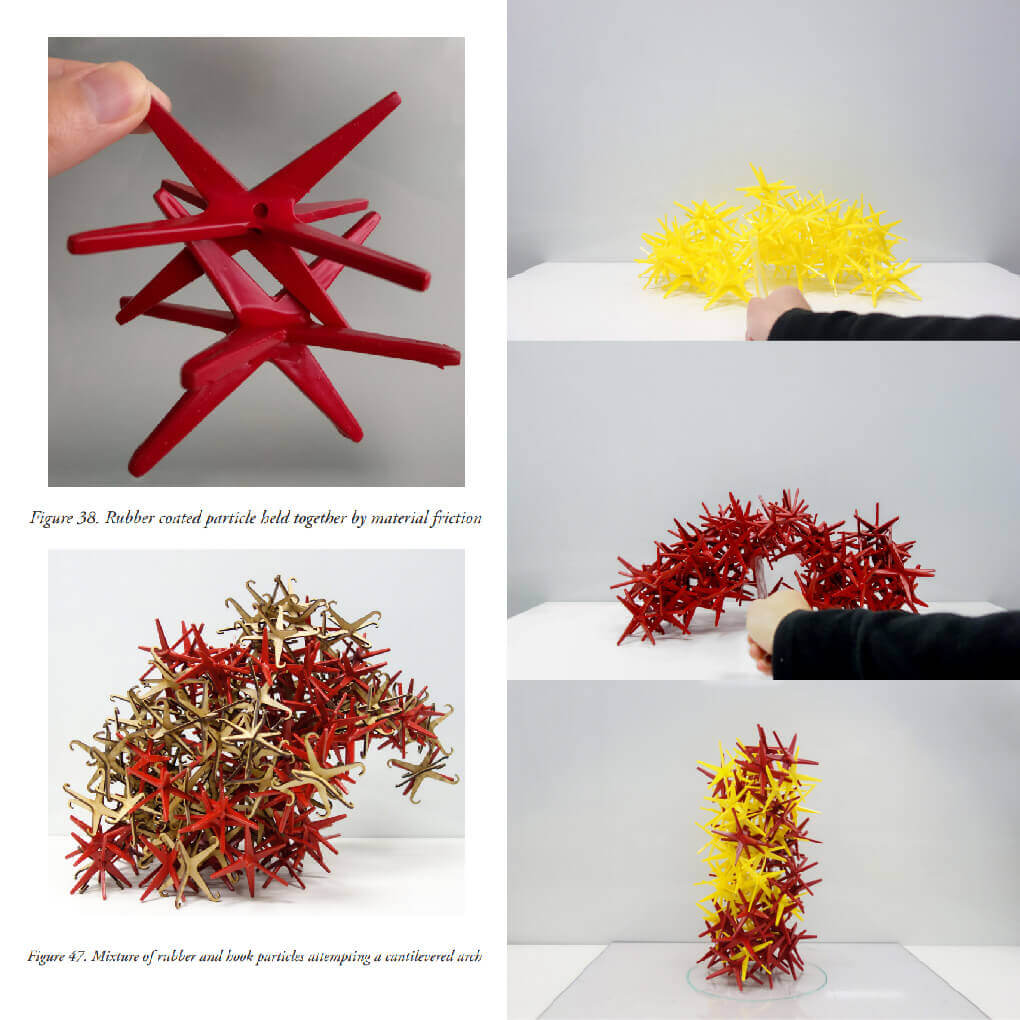 Firmitas, utilitas, venustas, with those principles Vitruvius set the foundation of Western architecture. Firmitas (firmness) determines strength and solidity in its material condition and expresses, stability and permanence—its capacity stand against the passage of time. This physical consistency relates to its formal solutions that allow structures to stand, but a “firm, stable architecture is also a solid architecture,” Ignasi de Solà-Morales notes, “whose dimensional and formal characteristics do not change in spite of environmental fluxes”. This permanence is achieved through delimiting space with solid materials as Morales claims, “the material condition—physical consistency, solid construction, delimitation of space—has for more than 25 centuries linked the knowledge and technique of architecture to permanence”.
Firmitas, utilitas, venustas, with those principles Vitruvius set the foundation of Western architecture. Firmitas (firmness) determines strength and solidity in its material condition and expresses, stability and permanence—its capacity stand against the passage of time. This physical consistency relates to its formal solutions that allow structures to stand, but a “firm, stable architecture is also a solid architecture,” Ignasi de Solà-Morales notes, “whose dimensional and formal characteristics do not change in spite of environmental fluxes”. This permanence is achieved through delimiting space with solid materials as Morales claims, “the material condition—physical consistency, solid construction, delimitation of space—has for more than 25 centuries linked the knowledge and technique of architecture to permanence”.
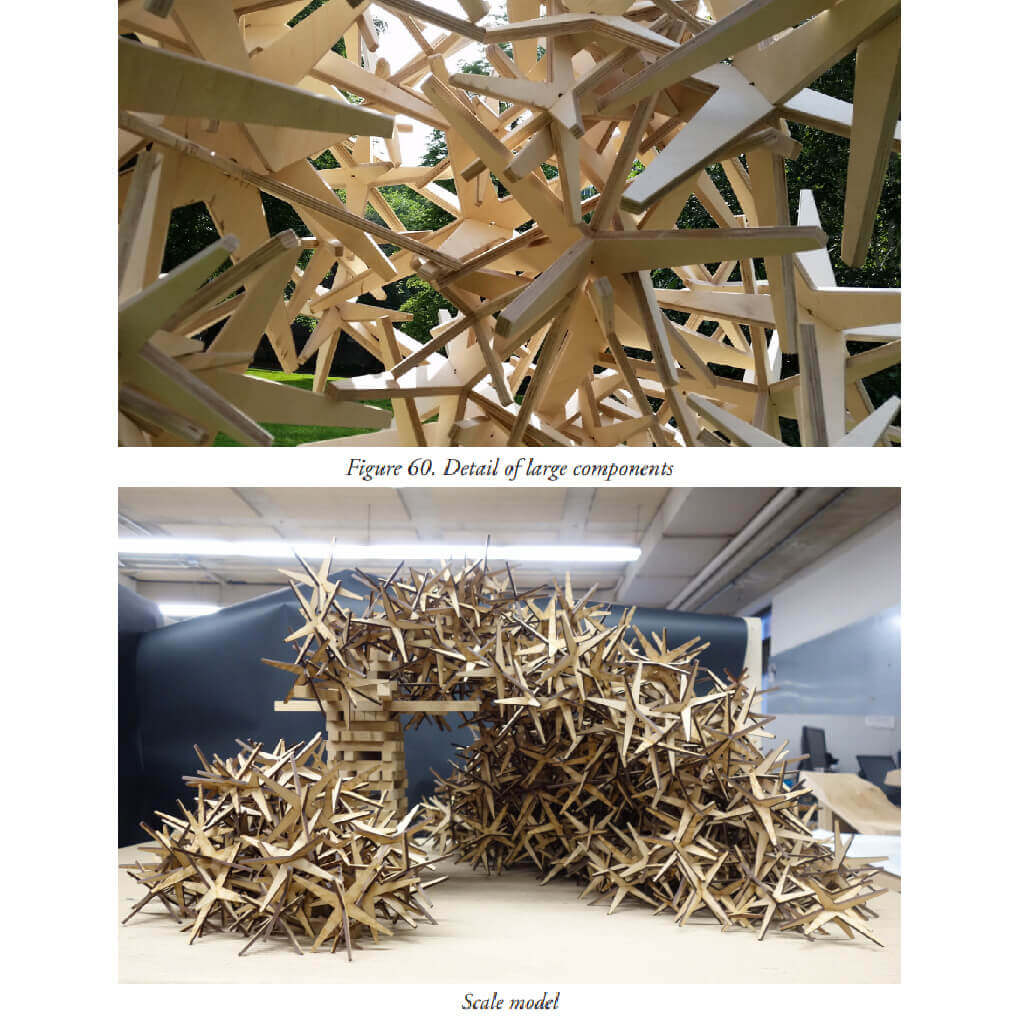 From the large megastructures and frameworks came a reaction refocusing efforts on individualistic counterculture via personal soft pods most prominently explored by the group Archigram. The imperative to them was to “create ‘open ends’, an architecture that expressed its inhabitants’ supposed desire for continuous change”. Literal soft material constructions, such as inflatables, were important as it a democratic alternative, allowing for continuous change and portability. Examples of these include the Cushicle and Suitaloon.
From the large megastructures and frameworks came a reaction refocusing efforts on individualistic counterculture via personal soft pods most prominently explored by the group Archigram. The imperative to them was to “create ‘open ends’, an architecture that expressed its inhabitants’ supposed desire for continuous change”. Literal soft material constructions, such as inflatables, were important as it a democratic alternative, allowing for continuous change and portability. Examples of these include the Cushicle and Suitaloon.
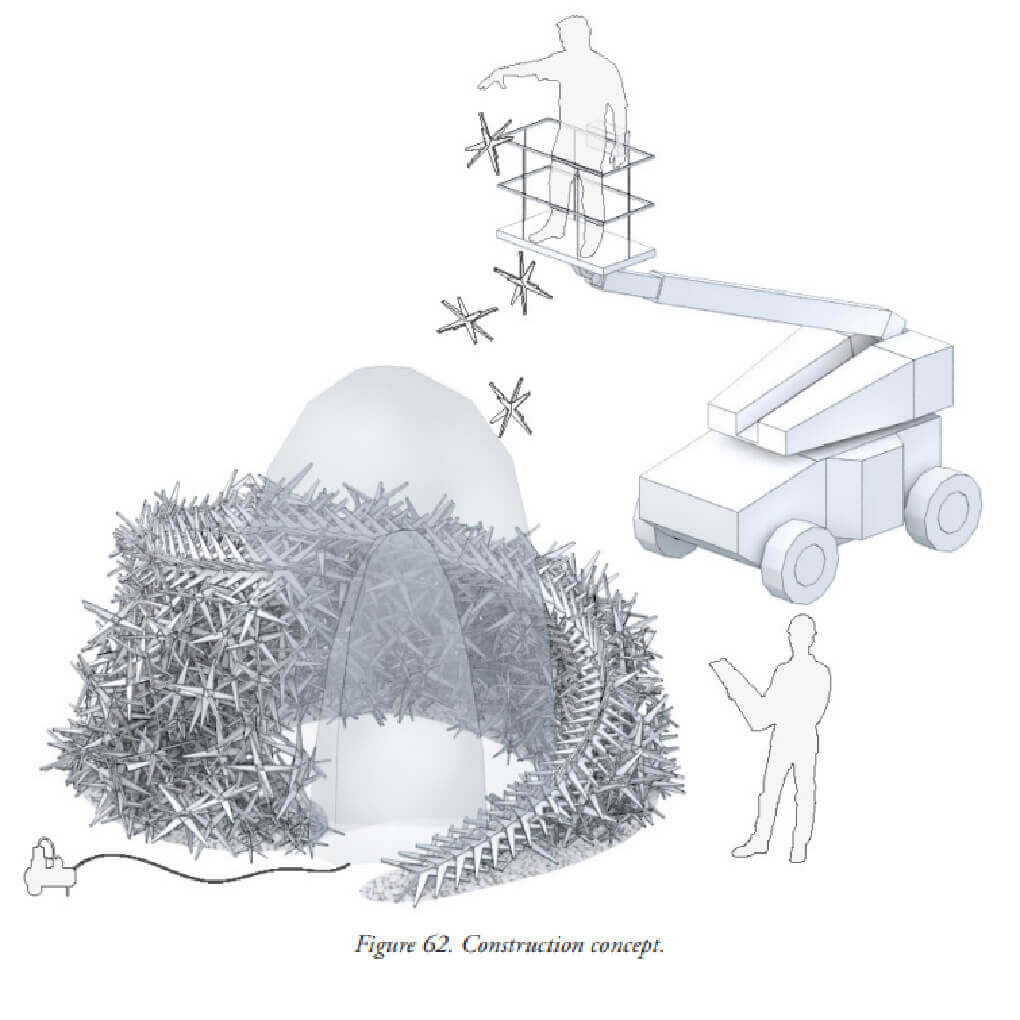 In 1967 Nicholas Negroponte founded the Architecture Machine Group at MIT where he went on to formulate the concept of Soft Architecture Machines (1975). He described an architecture that was soft in terms of the type of materials, but more importantly soft in terms of the structures of architecture— the software/ processing of architecture. Intelligent, machine computing that would augment the large number of variables and contingencies required in the architectural process, would allow non-architects to participate in the design and realization of their homes. In promoting a computer aided participatory design process, Negroponte consequently seeks to create a physical environment with agency and diminish the authorship of the architect.
In 1967 Nicholas Negroponte founded the Architecture Machine Group at MIT where he went on to formulate the concept of Soft Architecture Machines (1975). He described an architecture that was soft in terms of the type of materials, but more importantly soft in terms of the structures of architecture— the software/ processing of architecture. Intelligent, machine computing that would augment the large number of variables and contingencies required in the architectural process, would allow non-architects to participate in the design and realization of their homes. In promoting a computer aided participatory design process, Negroponte consequently seeks to create a physical environment with agency and diminish the authorship of the architect.
 Systems-based thinking provides a framework to understand nature and our relationship to it. With a holistic systems-based view of the world and its interconnected subsystems and processes, the dynamic complexity of our environment becomes apparent. This is especially clear when, within this system, one considers the individual as an intelligent being with agency and free will. As such, practices based on determinism can no longer be appropriate, although its history’s shadow remains over architecture. The ecological system is an uncertain space, but the biggest source of uncertainty for architecture comes from the social system and the individual. This uncertainty in the form of multiplicity of interactions and agents leads to complex behaviour. The study of complexity has long been engaged by scientists and even non-scientists in the quest to understand the natural and social world.
Systems-based thinking provides a framework to understand nature and our relationship to it. With a holistic systems-based view of the world and its interconnected subsystems and processes, the dynamic complexity of our environment becomes apparent. This is especially clear when, within this system, one considers the individual as an intelligent being with agency and free will. As such, practices based on determinism can no longer be appropriate, although its history’s shadow remains over architecture. The ecological system is an uncertain space, but the biggest source of uncertainty for architecture comes from the social system and the individual. This uncertainty in the form of multiplicity of interactions and agents leads to complex behaviour. The study of complexity has long been engaged by scientists and even non-scientists in the quest to understand the natural and social world.
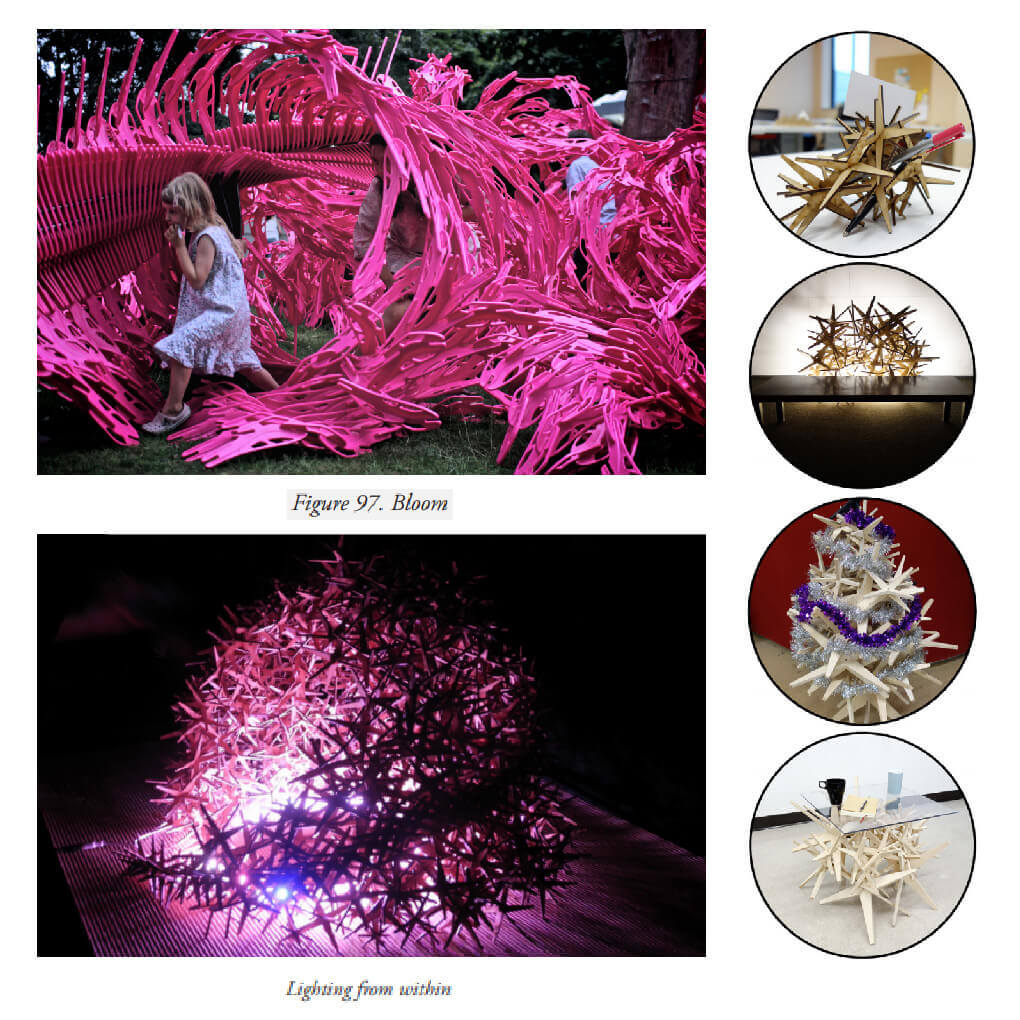 A fluid, complex material system open to feedback and exposed to the agencies of its environment will necessarily acknowledge the input from its users. If our perspective is expanded to consider now the convergence of the once discreet systems of material and user, what emerges is a more integrated and robust architectural system. Complexity is multiplied through this coupling, with the system for one process becoming the environment of another and vice versa.
A fluid, complex material system open to feedback and exposed to the agencies of its environment will necessarily acknowledge the input from its users. If our perspective is expanded to consider now the convergence of the once discreet systems of material and user, what emerges is a more integrated and robust architectural system. Complexity is multiplied through this coupling, with the system for one process becoming the environment of another and vice versa.
 The trajectory of adaptable architecture is rapidly moving towards the microscopic—engaging the fields of nanotechnology and bioengineering through the rise of small modular robotics and smart materials. There exists however, a category of macroscopic materials known as granular materials that hold much potential and are only beginning to be considered for architecture. Granular matter is defined as large amounts macroscopic elements in loose contact. In fact, they are “ubiquitous in nature and are the second-most manipulated material in industry”. Granular material encompasses a vast range of materials with different particle types and sizes, from fine sand to large boulders
The trajectory of adaptable architecture is rapidly moving towards the microscopic—engaging the fields of nanotechnology and bioengineering through the rise of small modular robotics and smart materials. There exists however, a category of macroscopic materials known as granular materials that hold much potential and are only beginning to be considered for architecture. Granular matter is defined as large amounts macroscopic elements in loose contact. In fact, they are “ubiquitous in nature and are the second-most manipulated material in industry”. Granular material encompasses a vast range of materials with different particle types and sizes, from fine sand to large boulders
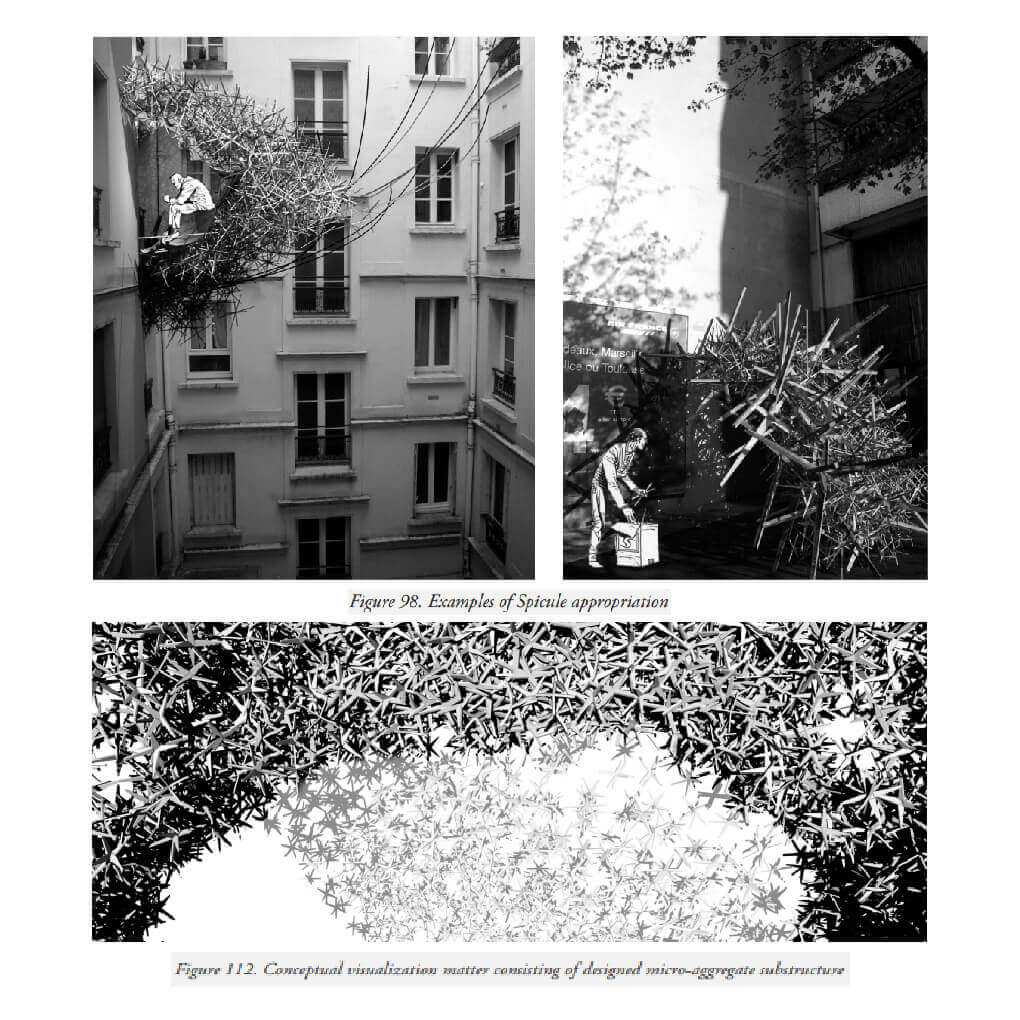 In natural granular materials, such as sand, the particles are typically simple and passive, but as a collective system, their loose, fictional contact give rise to special behaviors becoming a unique state of matter. Phillip Ball (1999), explains the patterns and formation of granular heaps. Although individual grains are composed of solid material, granular substances are able to flow like a liquid through a behavior called liquefaction yet are able to resist shear stress and can support loads. The organization of granular material seem to exhibit behavior seen in chaotic systems, where the smallest perturbation can have unpredictable reactions. What is of particular interest, is that instead of trying to escape the critical state, it seeks to constantly return to this “tipping point”. That is, it is remains highly sensitive to change but it is not infinitely unstable, but rather robust. Consider a sand pile, it will grow until it reaches its maximum angle of repose, where additional grains of sand added can trigger an avalanche transferring sand onto adjacent grains, where under the same rule can also trigger an avalanche. In this case, local interactions between simple component parts self-organized towards this state of criticality.
In natural granular materials, such as sand, the particles are typically simple and passive, but as a collective system, their loose, fictional contact give rise to special behaviors becoming a unique state of matter. Phillip Ball (1999), explains the patterns and formation of granular heaps. Although individual grains are composed of solid material, granular substances are able to flow like a liquid through a behavior called liquefaction yet are able to resist shear stress and can support loads. The organization of granular material seem to exhibit behavior seen in chaotic systems, where the smallest perturbation can have unpredictable reactions. What is of particular interest, is that instead of trying to escape the critical state, it seeks to constantly return to this “tipping point”. That is, it is remains highly sensitive to change but it is not infinitely unstable, but rather robust. Consider a sand pile, it will grow until it reaches its maximum angle of repose, where additional grains of sand added can trigger an avalanche transferring sand onto adjacent grains, where under the same rule can also trigger an avalanche. In this case, local interactions between simple component parts self-organized towards this state of criticality.




























Comments